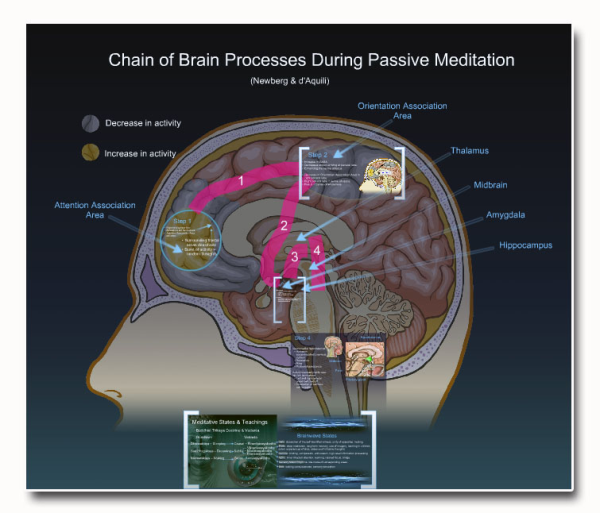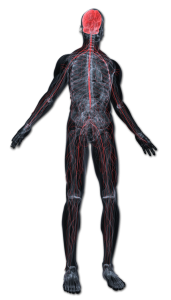Using Our Minds to Change Our Brains
 How can we, as meditators, use our attention to direct the flow of energy and information in our brains? In effect, how can we use our minds to change our brains?
How can we, as meditators, use our attention to direct the flow of energy and information in our brains? In effect, how can we use our minds to change our brains?
There are many different types of meditation. One person’s definition of meditation may differ from another’s. We can loosely say that one thing meditation has in common, in all of its different forms, is that it always has to do with some form of attention, whether passive or active. Some meditation forms have us concentrate on an object, and other forms of meditation are more passive, so that there’s a sense of allowing ourselves to be meditated rather than trying to meditate. In other words, there’s a sense of letting go and allowing the deeper awareness to emerge, so that we become more conscious of our awareness; we rest in this openness, this sense of spaciousness, which allows us to witness the flow of thoughts going through our mind rather than getting caught up in them.
You may have heard this statement before: “Energy flows where attention goes.” There is a theory in contemplative neuroscience, the study of meditation and the brain; it’s called “attention gate theory.” What this theory says is that attention, or the focused use of the mind, acts as a gate that allows neural energy and information to come in to specific areas of the brain. We actually send or direct the flow of neural information and energy to the part of the brain that mediates our specific focus of attention. In other words, we use our minds to change our brains.
To demonstrate, let’s just say that we have you hooked up to a Positron Emission Tomography (PET) scan, we have put a book in your lap, and we’ve also put some speakers in the room. Now we’re playing music and asking you to read the book at the same time. If we ask you to place your attention on reading, rather than on the music that’s emitting from the speakers, we’ll see specific areas of your brain that are involved in reading come online on the scan. The areas of the brain associated with hearing will be less active. Why is that? It’s because your attention is focused on the reading.
If we reverse that and say, “Hey, we want you to pay specific attention to the music that’s coming into your ears, to its qualities, tempo, and lyrics,” what we find is that the areas of the brain involved in reading will start to go offline. They’ll decrease in activity and the part of your brain involved in hearing and listening will start to become more active, precisely because you’ve changed your attention—your intention to focus your attention—to the music.
Both the object of attention and the quality of attention determine how we influence our brains. As you’re reading this right now, what are you paying attention to? What is the quality of that attention? Is it contracted? Is there an openness? Is the attention effortless, or does it feel like you’re putting effort into it? Does it feel scattered? Is there a sense of confusion? Both the quality of your attention and the object of your focus are actually lighting up your brain and changing your brain in real time—right now, this very minute.
 What this means for meditators is that the consistent placement of our attention in meditation appears to initiate long-term structural changes in the brain by impacting neuroplasticity. Neuroplasticity is our brain’s ability to change in response to experience. Now, this really is a revolutionary idea. It means that the way you and I experience our thoughts, our consciousness (or lack thereof), the way we experience the world around us, including our emotions, feelings, and belief systems, all of this changes our brains. It shapes them and molds them.
What this means for meditators is that the consistent placement of our attention in meditation appears to initiate long-term structural changes in the brain by impacting neuroplasticity. Neuroplasticity is our brain’s ability to change in response to experience. Now, this really is a revolutionary idea. It means that the way you and I experience our thoughts, our consciousness (or lack thereof), the way we experience the world around us, including our emotions, feelings, and belief systems, all of this changes our brains. It shapes them and molds them.
As we become more deeply conscious of our awareness, what we’re actually doing is teaching the neural networks in our brains that facilitate this awareness to become stronger and stronger, over time through repeated practice. We literally hardwire our brains to facilitate this deeper and deeper awareness. You might wonder why you would want to develop this awareness. Well, because what this means is that we can shift our experience of the world to increase our levels of happiness, of peace, of personal effectiveness, and of meaning and purpose in life.
Experience Profound Meditation – download the free demo
Leave a Comment
You must be logged in to post a comment.

Leave your comments below